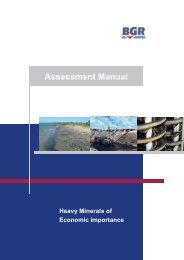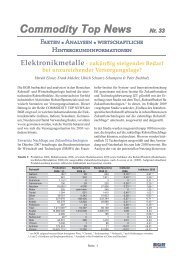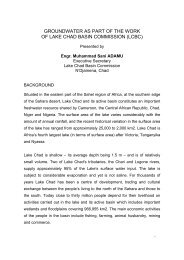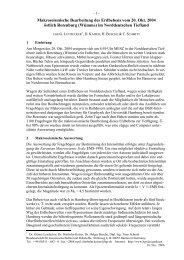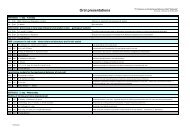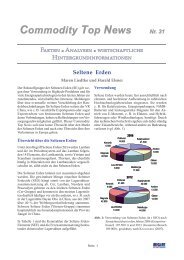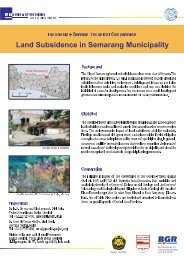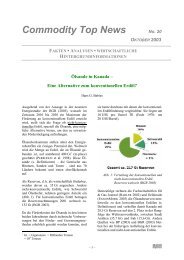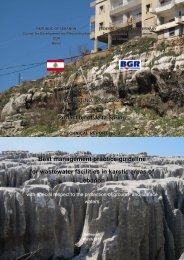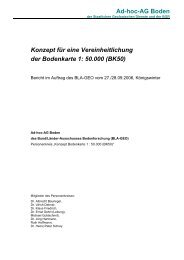THE SMOOTH SOUNDING GRAPH. A Manual for Field Work ... - BGR
THE SMOOTH SOUNDING GRAPH. A Manual for Field Work ... - BGR
THE SMOOTH SOUNDING GRAPH. A Manual for Field Work ... - BGR
You also want an ePaper? Increase the reach of your titles
YUMPU automatically turns print PDFs into web optimized ePapers that Google loves.
37<br />
5+6 Labourers pulling the current cable to the initial position in a wide<br />
bend around the "holy" district. On the drums the cable always<br />
should run from the top (Fig.27).<br />
Now the measurement can start; at each point along the measuring tape<br />
the apparent resistivity ρa is calculated from current I, voltage U and fac-<br />
tor K. In order to determine immediately the right order of the resistivity,<br />
with which the curve starts, significant importance is due to the calcula-<br />
tion of the first value <strong>for</strong> the apparent resistivity. For L/2=1,5m and<br />
a/2=0,5m the geometrical factor K is 2π=6,28 (exactly 2πa after Wenner,<br />
see chapter 1.3). If now the electrode current I will be adjusted numeri-<br />
cally to the factor K, the potential electrode voltage U is numerically equal<br />
to the apparent resistivity ρa. This results from <strong>for</strong>mula (13) in chapter<br />
1.4<br />
ρ<br />
a<br />
=<br />
U<br />
K<br />
I<br />
In practice normally the following three possibilities at the starting point<br />
result from this:<br />
a.) ρ a[<br />
Ωm] =<br />
U[<br />
mV ]<br />
× 6,<br />
28m<br />
0,<br />
628mA<br />
= U[<br />
mV ] × 10<br />
U[<br />
mV ]<br />
b.) ρ a[<br />
Ωm] = × 6,<br />
28m<br />
= U[<br />
mV ] × 1<br />
6,<br />
280mA<br />
U[<br />
mV ]<br />
c.) ρ a[<br />
Ωm] = × 6,<br />
28m<br />
= U[<br />
mV ] × 0,<br />
1<br />
62,<br />
80mA<br />
Using dry batteries the process I=K cannot be realized. ρa then has to be<br />
calculated on a slide rule or nowadays on a pocket-computer.<br />
The ρa-data are directly plotted on bi-logarithmic transparent paper, and<br />
<strong>for</strong> a better control written in a minute-book.<br />
Besides the date, site (with height above m.s.l.) and number of the<br />
sounding this minute-book should also contain the measured electrode<br />
current I[mA], the measured potential electrode voltage U[mV] and of<br />
course the apparent resistivity ρa. An additional column seems desirable<br />
<strong>for</strong> remarks like industrial current, tellurics, weather (rain, sun, wind,<br />
thunderstorm) and perhaps a short description of the field (mash-wire



